|
RV Coach Regulators House 12v supply from batteries |
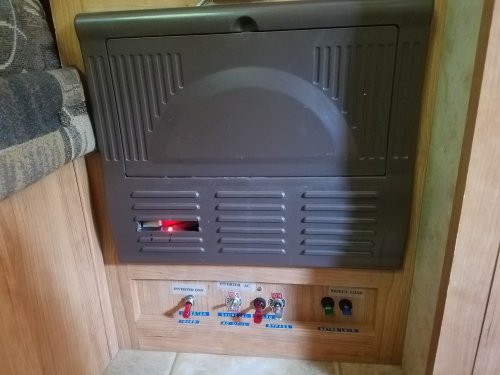 Original placement of the Regulators was inside the power panel. But there was no room and it was a wiring mess.
Original placement of the Regulators was inside the power panel. But there was no room and it was a wiring mess.
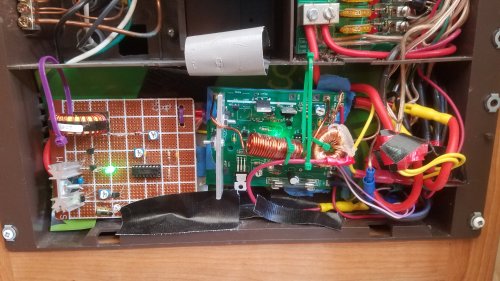 Also, I was done with prototyping.
Also, I was done with prototyping.
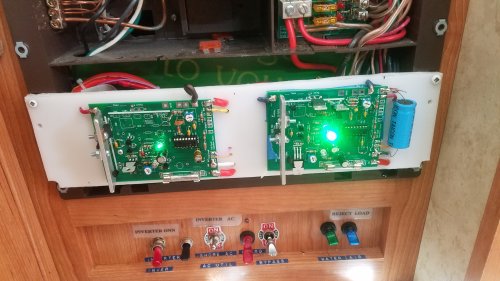 The first step was to place Regulators on a teflon board with all the wiring behind the board. Also the chokes were mounted behind the teflon board.
I noticed that fusing was 15 amps for one board and 20 amps for the other. I do not know why. It does not matter.
Both together give me almost 40 amps of Low Voltage DC Coach current. In a practical sense, I never go over about 15 amps on this DC system.
The AC is a different story; it uses Lithium, and currents can go way higher.
The first step was to place Regulators on a teflon board with all the wiring behind the board. Also the chokes were mounted behind the teflon board.
I noticed that fusing was 15 amps for one board and 20 amps for the other. I do not know why. It does not matter.
Both together give me almost 40 amps of Low Voltage DC Coach current. In a practical sense, I never go over about 15 amps on this DC system.
The AC is a different story; it uses Lithium, and currents can go way higher.
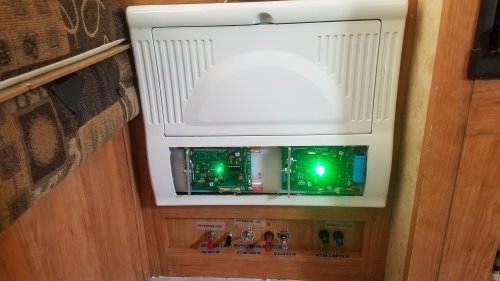 Cut a huge opening in the power panel. And painted the power panel white.
Now everything fits, but the Regulator Boards are exposed. But that is not bad; now I can see them. They each have a green LED for the amount of current,
and two red LEDs indicating temperature Cutback, or Disabled from the Solar Controller.
Cut a huge opening in the power panel. And painted the power panel white.
Now everything fits, but the Regulator Boards are exposed. But that is not bad; now I can see them. They each have a green LED for the amount of current,
and two red LEDs indicating temperature Cutback, or Disabled from the Solar Controller.

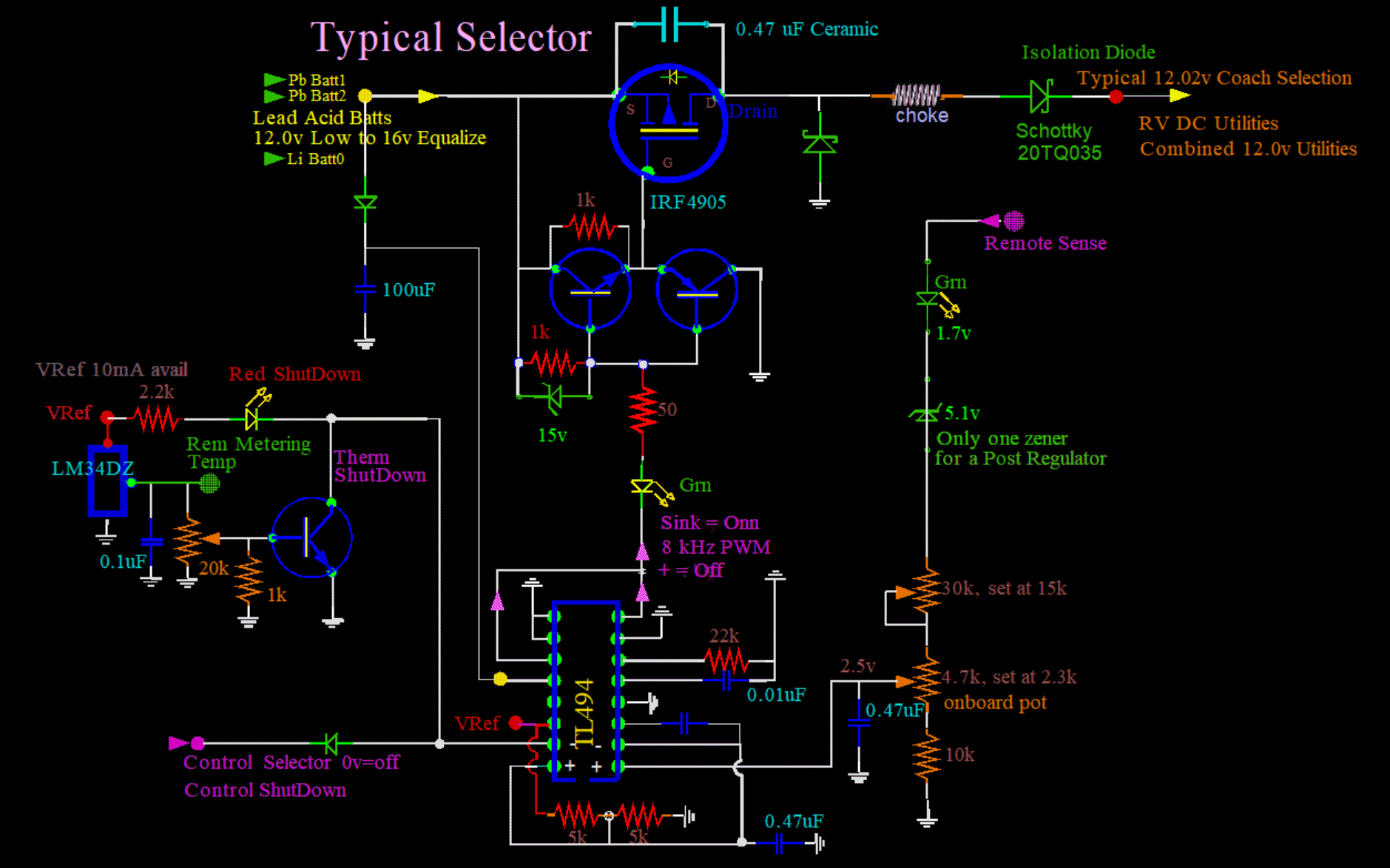
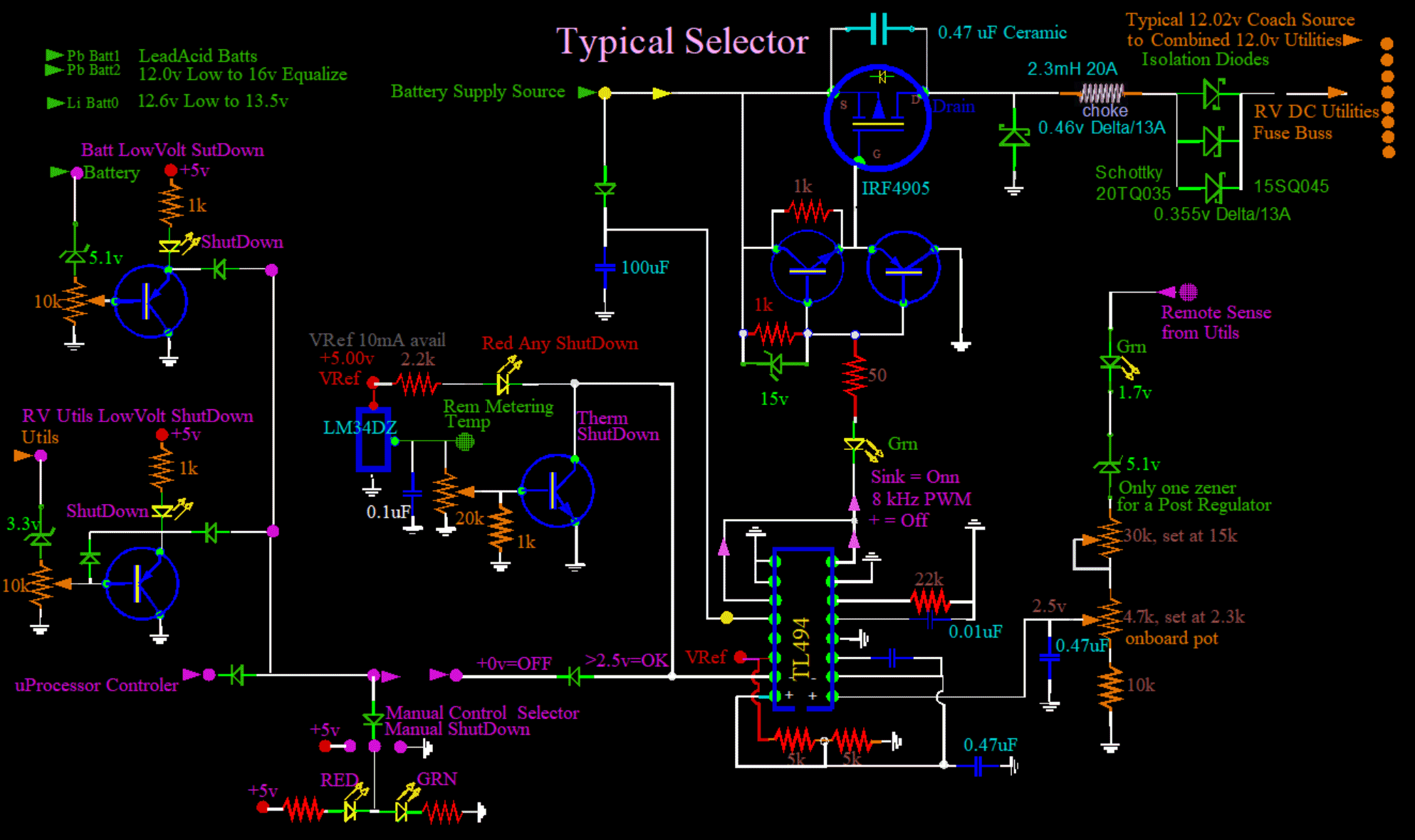
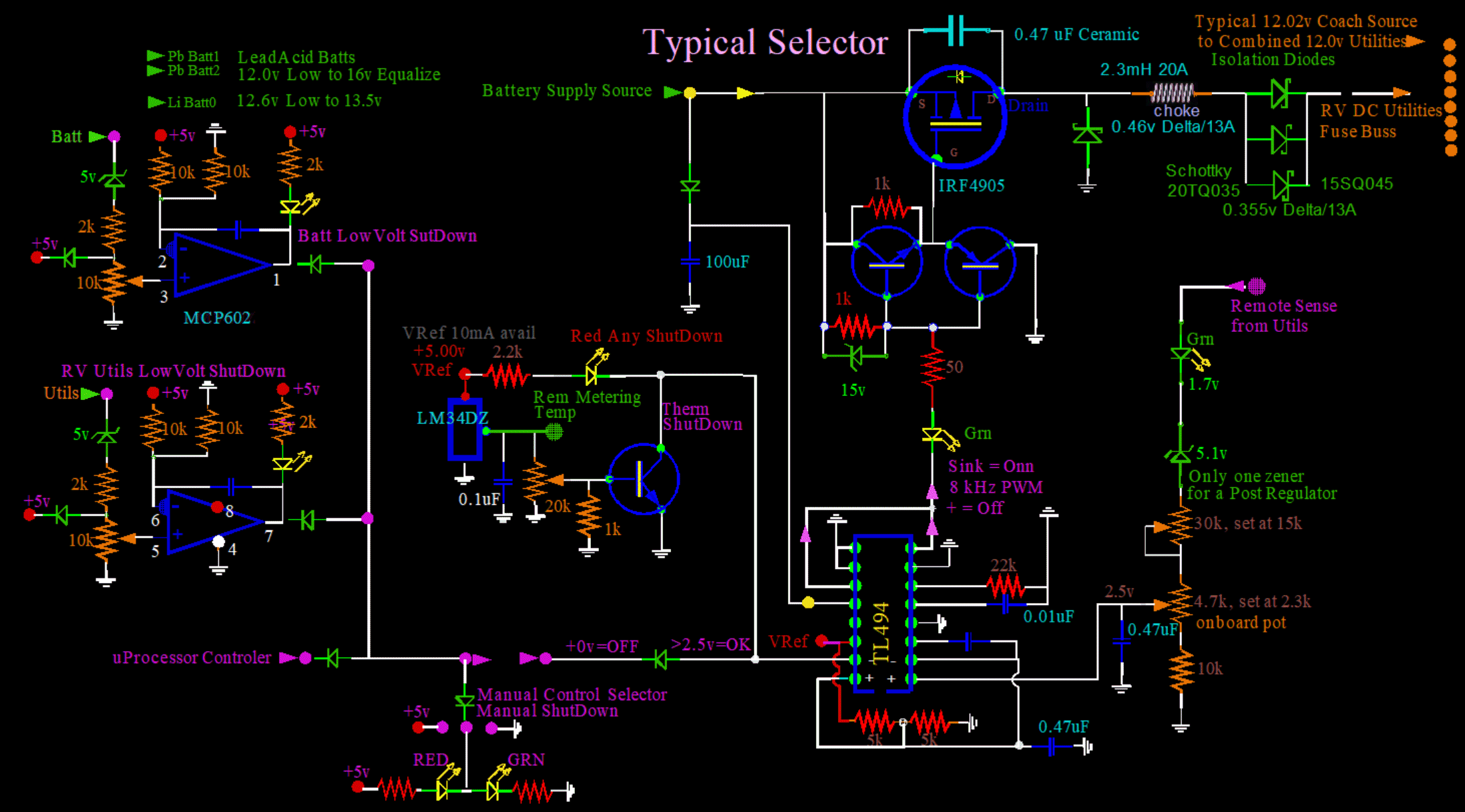
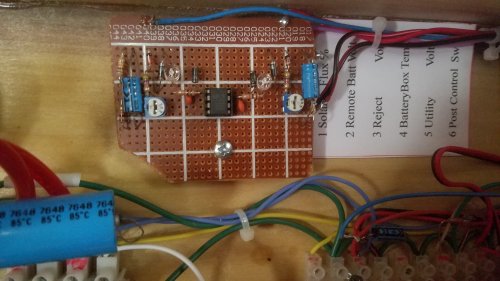 Simple little add on board with a corner missing. But works great!
Simple little add on board with a corner missing. But works great! 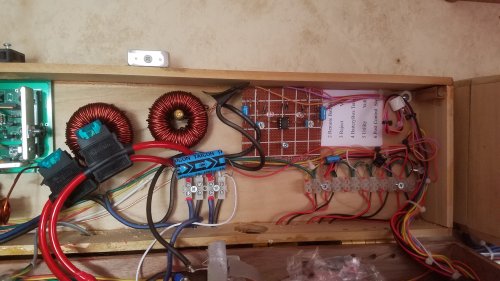 ...And put one in the other Lead Acid Controller.
Still seems crazy to have the software doing the same thing as hardware. But it is what it is.
...And put one in the other Lead Acid Controller.
Still seems crazy to have the software doing the same thing as hardware. But it is what it is.